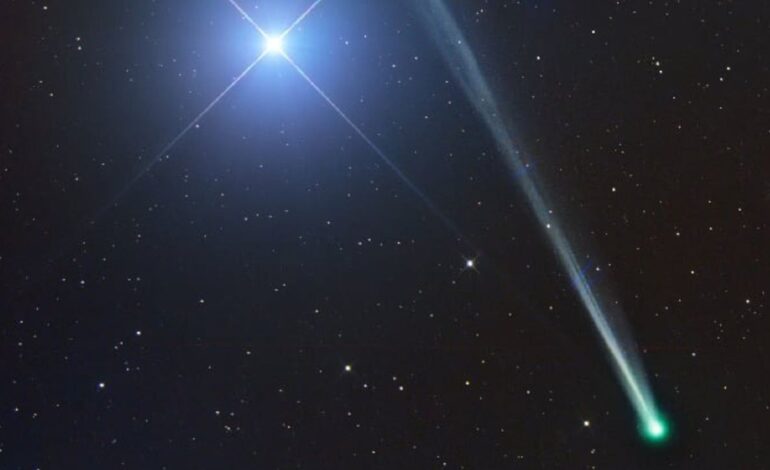Comet C/2025 R2 (SWAN) Set to Dazzle October Sky

A newly discovered comet, designated as C/2025 R2 (SWAN), is anticipated to become a striking presence in the October night sky as it approaches Earth. Discovered on September 10, 2023, by Ukrainian amateur astronomer Vladimir Bezugly, the comet has exhibited significant brightness, raising hopes that it could be visible to the naked eye during its closest approach on October 21, 2023.
As C/2025 R2 (SWAN) nears the sun, the heat causes frozen materials in its nucleus to sublimate, turning from solid to gas. This process creates a glowing gaseous shell that is propelled away by solar wind, forming a tail of dust and gas that reflects sunlight. This transformation could result in a spectacular sight for stargazers, especially under optimal viewing conditions.
The comet recently reached perihelion, its closest point to the sun, on September 12, 2023, coming within approximately 47 million miles of our star, about half the average distance of Earth’s orbit. Observations from the Comet Observation Database (COBS) at Slovenia’s Crni Vrh Observatory indicate that C/2025 R2 (SWAN) currently shines at a magnitude of 5.6, making it potentially visible as a faint object to the naked eye in dark skies.
Viewing Opportunities in October
Stargazers can look for C/2025 R2 (SWAN) in the evening sky throughout October. The best time to observe will be shortly after sunset, before the comet drops below the south-southwest horizon. On October 16, 2023, the comet will be located approximately 5 degrees above and to the left of the star Xi Serpentis in the constellation Serpens. For those unfamiliar with the night sky, stargazing apps can assist in locating the comet.
In the following week, C/2025 R2 (SWAN) will traverse above the well-known “teapot” asterism in the constellation Sagittarius before moving through the stars of Scutum. By the end of October, the comet will be visible in the southern sky, positioned between the bright stars Sadalmelik and Sadalsuud in the constellation Aquarius, with the half-lit moon shining below.
For enthusiasts eager to capture this celestial phenomenon, it is advisable to consult guides on the best binoculars and telescopes for viewing the night sky. Additionally, photographers interested in imaging the comet should refer to resources detailing techniques for capturing solar system comets using DSLR cameras.
If you manage to photograph C/2025 R2 (SWAN), consider sharing your images and experiences with fellow astronomy enthusiasts by sending your submissions to [email protected].
As excitement builds around this upcoming celestial event, October promises to be a month of wonder for both amateur and seasoned astronomers alike.






